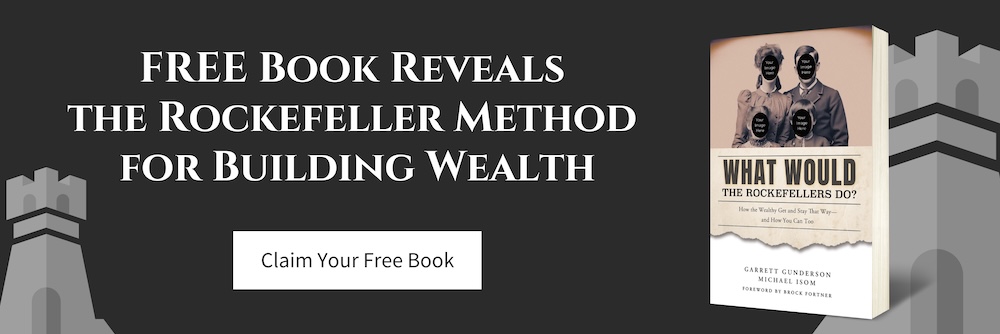
Understanding Dividends and Interest in Whole Life Insurance (Part 2 of 6)
Part 1: The Fundamentals of Whole Life Insurance
Part 2: Understanding Dividends & Interest
Part 3: How to Access Cash Value & Policy Loans
Part 4: How Whole Life Insurance Premiums Work
Part 5: Strategic Uses of Whole Life Insurance
Part 6: Using Whole Life Insurance for Legacy Planning
At StoneCentury, we work with high-performing professionals and business owners who don’t just want a product—they want a strategy. They want clarity, mechanics, and control.
So let’s break down one of the most important and misunderstood aspects of whole life insurance: dividends and interest.
Who Determines the Interest Rate?
This is one of the most misunderstood questions in the entire insurance world—because people assume whole life “earns interest” the same way a bank account does.
But here’s the truth: whole life doesn’t pay interest in the traditional sense. Instead, the guaranteed cash value growth is baked into the contract and set by the insurance company. Then, on top of that, mutual insurance companies may declare a dividend, which boosts your growth above the guaranteed floor.
There’s no single “interest rate.” There’s:
A guaranteed rate of cash value increase (often 3–4% depending on the policy issue date)
A non-guaranteed dividend—based on company performance
Combined, these create a net growth rate—often in the 3–5% internal rate of return range long term. And it’s tax-deferred, non-correlated to markets, and not subject to annual fluctuation in the same way your brokerage account is.
How Do Dividends Work?
A dividend is considered a return of premium—not taxable income. It’s the insurance company saying, “We didn’t need all of the money we charged you. Here’s some back.”
But it’s better than a refund. Because when you leave that dividend in the policy, it buys paid-up additions (PUAs)—which means:
Immediate increase in your cash value.
Increase in your death benefit.
Additional future dividend eligibility.
A new guaranteed floor.
This is one of the biggest wealth multipliers in whole life.
Properly structured policies with high early cash value generate meaningful dividends early—and that snowballs over time.
Don’t be too concerned with the dividend rate and what you receive. Each year it will be different.
But remember, dividends are not guaranteed until paid out.
Dividends unfortunately are the black box of the industry. All insurance companies credit them differently and have different sizes due to the size of the company.
Direct Recognition vs. Non-Direct Recognition: What’s the Difference and Does it Matter?
Here’s the distinction:
Non-Direct Recognition: The insurance company pays you and everyone else the same dividend on your entire cash value—even the portion you’ve borrowed against.
Direct Recognition: The insurance company pays the same dividend to everyone’s cash value that is not loaned against, and adjusts the dividend on the loaned portion. Depending on the policy loan, interest rates this dividend could be lower (by .7%) but could also be raised.
Is one better than the other?
Not really. If we’re talking fairness, direct recognition is the way to go. In the long run it won’t necessarily matter. You want to make sure you’re paying your loans back and paying attention to your loan rates.
Most Non-Direct Recognition Companies offer a direct recognition type loan. All Direct Recognition Companies, you can collateralize cash values with a third party lender and get the same “Non-Direct Recognition” treatment.
How Does the Insurance Company Come Up With the Dividend?
Dividends are based on the profits of the insurance company and are generally made up of these three key factors:
Investment performance of the company’s general account.
Mortality experience—how actual death claims compare to what they expected.
Expenses—how efficiently the company runs.
Mutual life insurance companies are owned by policyholders—not stockholders. So instead of issuing stock dividends, they issue policy dividends to participating policyholders. When a company is well-managed and conservative, this creates stable, consistent dividend histories that span over 100+ years—even through recessions, wars, and pandemics.
We only work with companies that have paid dividends for over a century without interruption.
What Can I Do With My Dividends?
You have six options.
Buy Paid-Up Additions (PUAs) – Increases cash value and death benefit (most common choice)
Reduce your out-of-pocket premium
Take the dividend in cash (tax-free if up to basis)
Use the dividend to repay policy loans
Purchase one-year term insurance
Grow the dividends at the insurance company in a side account
At StoneCentury, we almost always recommend using dividends to buy PUAs—especially in the early years—because it accelerates growth and cash access.
Why This Matters
Dividends and interest aren’t abstract features. They’re the mechanisms that allow you to:
Build liquidity and equity in a safe environment.
Access capital without interrupting growth.
Create tax-free income later in life.
Maintain financial control, even when markets are volatile.
If you understand this, whole life stops being “just insurance”—and becomes a central pillar in your financial ecosystem. This is why it’s important to understand the living benefits of whole life insurance.
Learn How the Rockefellers Used This for Generations
Want to see how the wealthiest families have used whole life insurance—dividends, loans, and all—as the foundation of a lasting financial strategy?
Get your free copy of What Would the Rockefellers Do?
This short guide walks through how they structured their policies, created their own family bank, and passed on wealth for generations.
Click here to request your free copy.


